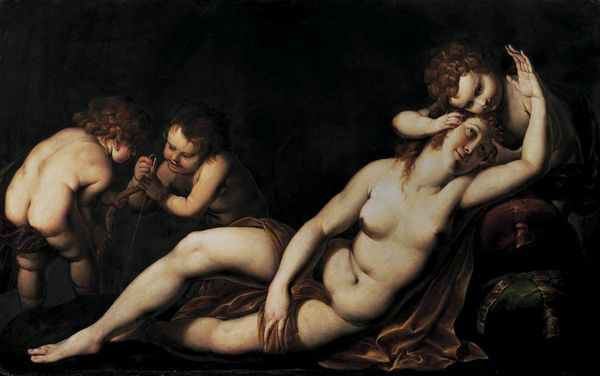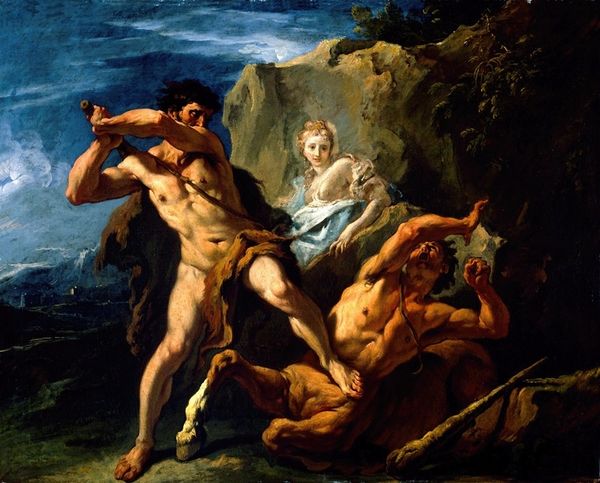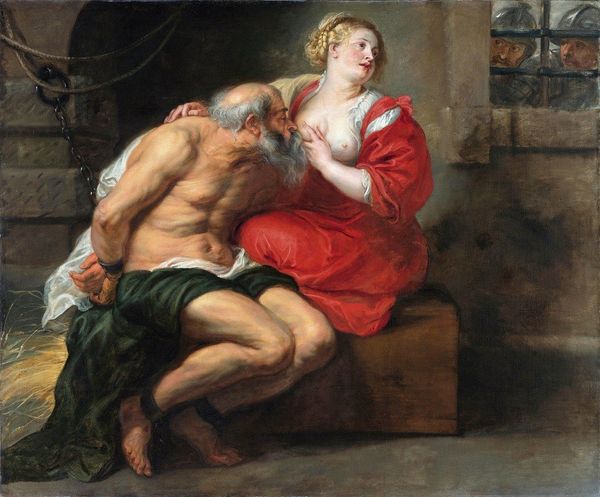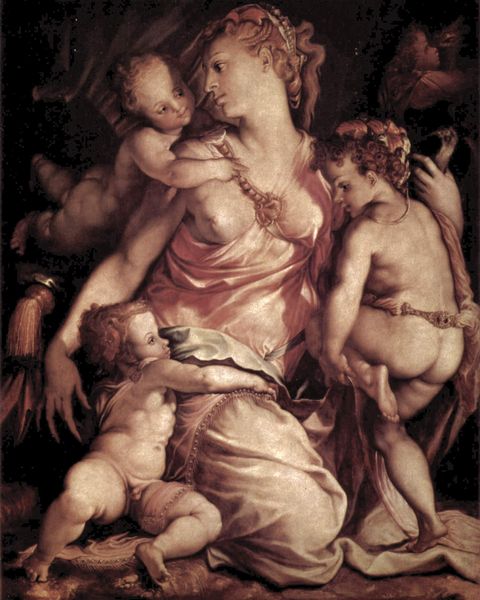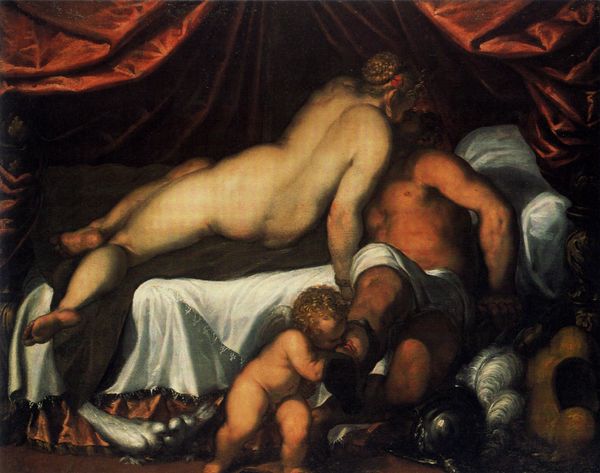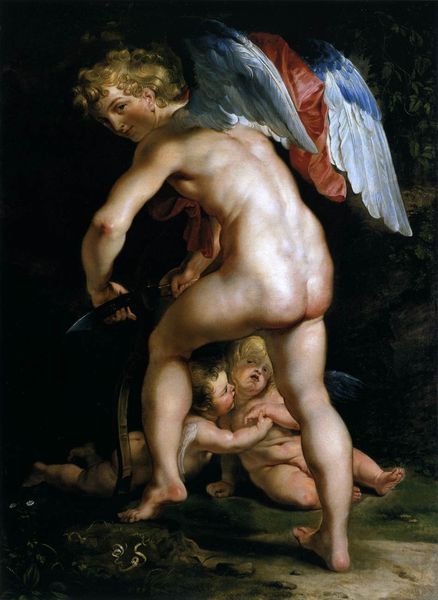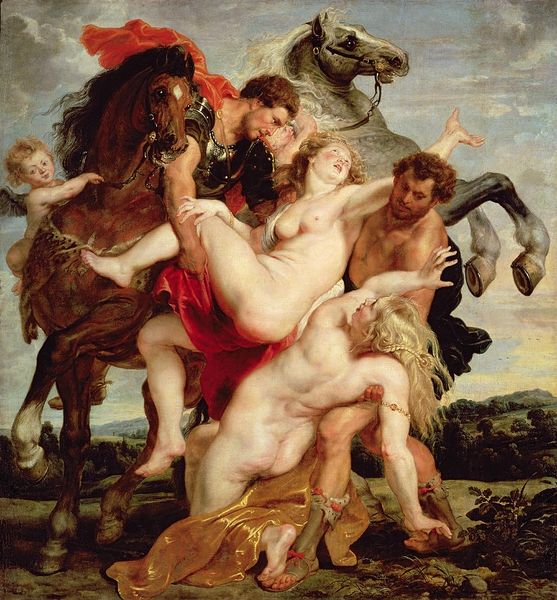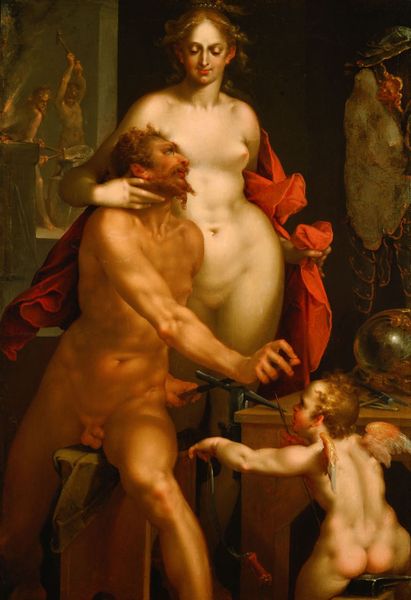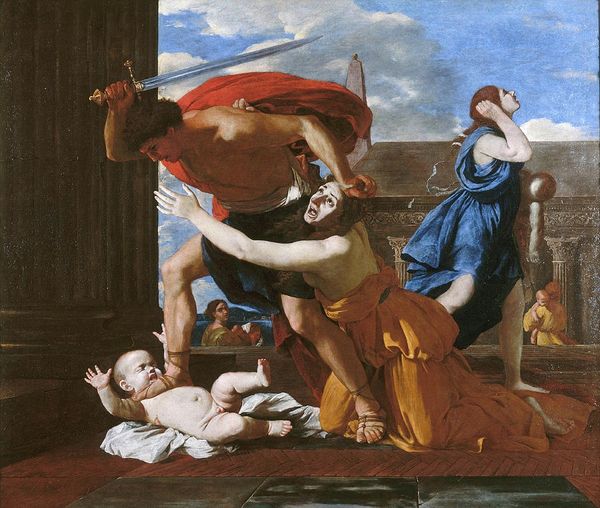
painting, oil-paint
#
venetian-painting
#
allegory
#
fantasy art
#
painting
#
oil-paint
#
mannerism
#
figuration
#
christianity
#
mythology
#
history-painting
Dimensions: 198 x 151 cm
Copyright: Public domain
Curator: This oil painting is Paolo Veronese's "The Temptation of St Anthony," created in 1553. It currently resides in the Musée des Beaux-Arts de Caen, in France. Editor: The overwhelming sense is violent and claustrophobic. The limited palette focuses your attention, creating this tight feeling around the central figure of St. Anthony. It seems less about serene contemplation and more about a brutal struggle. Curator: Precisely. The mannerist style is in full force here, emphasizing drama and heightened emotion. Notice how St. Anthony, usually portrayed as peacefully resisting temptation, is actively fighting. It underscores the psychological turmoil within him. He's physically beset. Editor: And that makes the depiction more compelling for our contemporary moment, doesn't it? It throws open the narratives we craft around religious devotion. It begs us to interrogate faith through lived experience. Anthony isn't presented as holier-than-thou but as caught between a rock and a hard place, just like many of us. He’s surrounded by strong symbols. Curator: Exactly! He's draped in red, color associations of blood, sacrifice, even lust. A figure in shadow is bearing down on the saint while a sensual female figure looms near. We think of Eve, temptations of the flesh, all these cultural connections that represent the challenges to a pure soul. We understand that those aren’t so clear. Editor: Though let's also think about how this piece resonates in the socio-political reality in 16th century Venice. Who's controlling the story? Where does our interpretation intersect with the artist's, with that of the church itself? This image participates in creating and bolstering structures of authority, don't you think? How might an image like this further other the non-believer, the sinner? Curator: That's astute. Images like this were powerful tools. The figures aren't just artistic flourishes, they represent a codified set of beliefs. Whether we read the symbolism, at surface or subtext, we have the impression. Editor: Seeing "Temptation of St. Anthony" forces us to confront historical beliefs, not as passive receivers, but as active interpreters within our own present, asking tough questions about agency, faith, and how we choose to resist. Curator: It gives us pause and we see these are not the simple visual records. Editor: Precisely, visual rhetoric with a legacy.
Comments
No comments
Be the first to comment and join the conversation on the ultimate creative platform.


